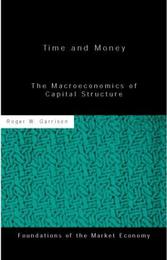
|
Time and Money: The Macroeconomics of Capital Structure
Hardback
Main Details
Description
Can we accept or find practical use for macroeconomics: * in which consumption and investment always move together in the short run * in which these two magnitudes must move in opposition to change the economy's rate of growth * for which the long run emerges as a seamless sequence of short runs? It is increasingly recognised that the weakness in modern macroeconomic theorizing is the lack of real coupling of short and long-run aspects of the market process. In the short run, the investment and consumption magnitudes move in the same direction, either both downward into recession or both upward toward full employment and even beyond in an inflationary spiral. But for a given period and with a given technology, any change in the economy's growth rate must entail consumption and investment magnitudes that move, intially, in opposition to one another. Roger W. Garrison claims that modern Austrian macroeconomics, which builds on the early writings of F.A. Hayek, can be comprehended as an effort to reinstate the capital-theory core that allows for a real coupling of short and long-run perspectives. Although the macroeconomic relationships identified are largely complementary to the relationships that have dominated the thinking of macroeconomists for the past half century, Time and Money presents a fundamental challenge to modern theorists and practitioners who overdraw the short-run/long-run distinction. The primary focus of this text is the intertemporal structure of capital and the associated set of issues that have long neglected in the more conventional labour- and money-based macroeconomics. This volume puts forth a persuasive argument that the troubles that characterize modern capital-intensive economies, particularly the episodes of boom and bust, may best be analyzed with the aid of a capital-based macroeconomics.
|